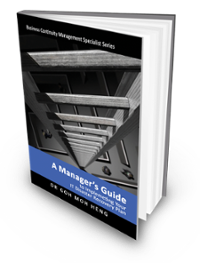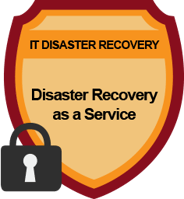Disaster Recovery as a Service
What is "Disaster Recovery as a Service" or "DRaaS"? Is it simply offloading DR processes to a cloud, or is it something far more specialized than that?
DRaaS is ‘the replication and hosting of physical or virtual servers by a third-party to provide failover in the event of a man-made or natural catastrophe.'
That being said, there is a significant distinction between traditional cloud backup and the cloud disaster recovery that is DRaaS. While, on the surface, both simply involve backing up data, the latter is often more specialized to ensure that data survives whatever disaster that may befall you and your organization.
What DRaaS provides that a standard cloud backup does not necessary does is A virtual server, adequate infrastructure, as well as knowledge and expertise to operate and navigate not only the virtual environment but software application.
Advantages of DRaaS
Of course, with these added benefits come extra costs, both financial and otherwise. DraaS is, in addition to the extra expenses needed to set the corresponding server and infrastructure up, is also far more labor-intensive than a simple cloud backup solution.
An organization’s choice of what level of protection should be adopted would be decided based on an organization’s recovery time objective (RTO). If the RTO is flexible and, for example, over 24 hours, a cloud backup would suffice to tackle the problem. If the RTO is rigid and is less than 24 hours, cloud disaster recovery is the recommended option instead.
Re-thinking DRaaS AS Proactive Solution
DRaaS is not a solution to be brought out only for emergencies. A problem that spans both traditional DR and DRaaS is the simple fact that many organizations still regards DR as a reaction solution to a problem, rather than a proactive one.
DR’s intention as a 365/24/7 failsafe for your organization serves to guard your data at all times, and it should not serve as some last resort to be whipped out when trouble comes calling. The threat of business disruption is a forever present looming threat, and vigilance is needed to catch it before it falls.
Reference
Goh, M. H. (2016). A Manager's Guide to Implementing Your IT Disaster Recovery Plan. Business Continuity Management Specialist Series (2nd ed.). Singapore: GMH Pte Ltd.
Extracted from "Chapter 4: Project Management: Step 1: Establish the Need for DR Planning"
More Information About IT DR Blended Learning
To know more about our blended learning program and when the next course is scheduled, feel free to contact our friendly course consultant colleagues via sales.ap@bcm-institute.org. They are the BL-DR-3 Blended Learning DR-300 IT Disaster Recovery Implementer and the BL-DR-5 Blended Learning DR-5000 IT Disaster Recovery Expert Implementer.
 |
 |
 |
 |
 |
 |
 |
Please feel free to send us a note if you have any of these questions to sales.ap@bcm-institute.org |
![FAQ [BL-DR] [5] DRP-5000](https://no-cache.hubspot.com/cta/default/3893111/e1e30273-3d46-4a5b-9f9d-11d9457a377a.png) |




